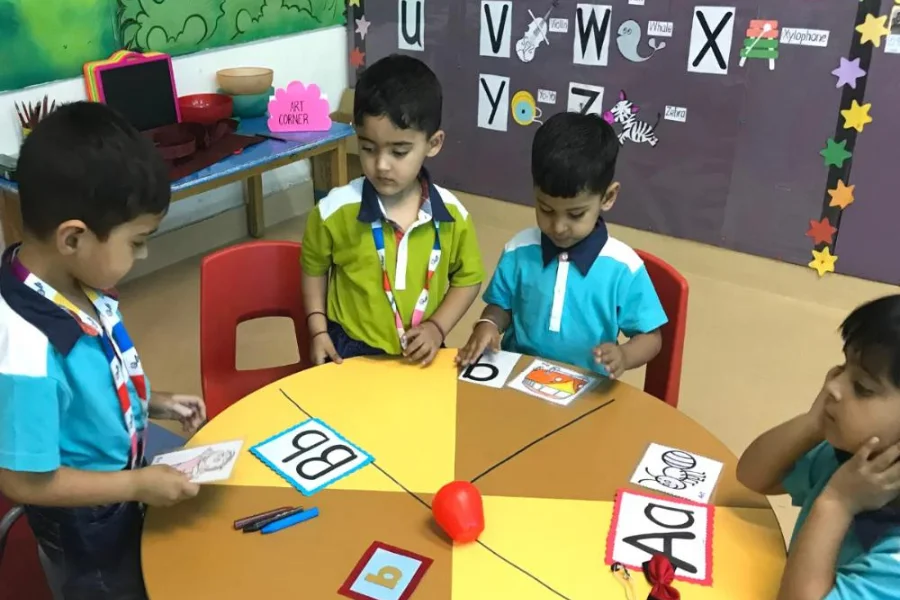Types of Phonics Instruction

Source: youtube
Types of Phonics Instruction
Phonics is an important part of knowledge to read, and comprehending the various Types of Phonics Instruction can greatly improve this learning voyage. Whether you’re a parent looking to help your youngster, an educator seeking operative strategies, or simply inquisitive about how phonics works, knowing the numerous Types of Phonics Instruction can be extremely useful.
Each method offers unique advantages and provides different learning styles, making it significant to discover the Types of Phonics Instruction to find the appropriate fit for students. From synthetic to analytic, and from analogy-based to embedded phonics, this article focuses on clarifying the Types of Phonics Instruction, offering clear visions of their practices and applications in the schoolroom.
Table of Content

Source: wordunited
Synthetic Phonics
Explanation
This instruction methodology focuses on sounding out letters or groups of letters and then blending these sounds to build a word. For instance, the word ‘pit’ can be formed by sounding out each letter: /p/-/i/-/t/, and later blending them.
Advantages
It is one of the Types of Phonics Instruction whose systematic approach ensures that learners can tackle almost any word, cultivating independent reading in children.
Disadvantages
Synthetic Phonics instruction may overlook the comprehension aspect of reading and the context of words, focusing too heavily on decoding.
Call / Whatsapp on +919869866277 / +919869546913, for the attributes of the Phonics Course for Teachers.
To download the Phonics Course for Teachers brochure, Visit Here!
Analogy Phonics
Explanation
Analogy Phonics is one of the Types of Phonics Instruction that teaches reading by exploiting known words as analogies for learning new words. For instance, if a student is familiar with the word “mat,” teachers use it as a basis to learn “sat” by concentrating on the shared sound.
Advantages
Analogy Phonics builds up new words on existing knowledge, making it easier for students to comprehend them.
Disadvantages
Its effectiveness is limited by the student’s existing knowledge and may not be as systematic as other Types of Phonics Instruction.
Analytic Phonics
Explanation
Unlike Synthetic Phonics, this is one of the Types of Phonics Instruction that involves learning words as wholes and then examining the phonetic components. Students might learn the word “dog” and then discuss the sounds within the word.
Advantages
Analytic Phonics places words in a broader context and supports vocabulary development.
Disadvantages
Analytic Phonics can lead to slower progress in decoding skills because it doesn’t emphasize the blending of sounds from the outset.

Source: landmark
Embedded Phonics
Explanation
This Embedded Phonics is one of the Types of Phonics Instruction that integrates into text reading, teaching sounds in the context of a whole language experience. It’s less systematic, focusing on learning words within literature.
Advantages
It makes learning relevant and enjoyable, connecting phonics with real reading experiences.
Disadvantages
The lack of a systematic approach in Embedded Phonics instruction can leave gaps in a student’s phonetic knowledge.
Integrating these Types of Phonics Instruction into literacy education permits for a multifarious approach to reading. Each of the Types of Phonics Instruction has its strengths and drawbacks, and the preference of method varies according to specific needs and previous knowledge of learners. By understanding and using these various Types of Phonics Instruction, educators can adapt their teaching plans to bring out the best development for proficient reading.
Call / Whatsapp on +919869866277 / +919869546913, for the info on Phonics Course for Teachers.
To check the brochure of the Phonics Course for Teachers, Click Here!
Phonics Classes Online
In the quest to enhance reading and spelling skills in children, a Phonics Course for Teachers has appeared as a pivotal educational tool. Among the myriad options available, Vidhyanidhi Education Society (a government-recognized institute) stands out by offering specialized Phonics Classes Online that cater to a broad spectrum of learning needs. These Classes Online are not just about teaching the basics of reading; they are a gateway to unlocking a child’s full potential in language comprehension and usage.
Here’s what makes their Online Phonics Course for Teachers uniquely beneficial:
18 hours of intensive training
This meticulously designed Phonics Classes Online duration ensures that participants receive a deep dive into phonics, covering all essential aspects without overwhelming them.
UK-based Synthetic Phonics Teaching Methodology
Vidhyanidhi Education Society (Govt. regd.) follows this popular approach, recognized for its effectiveness in improving reading and spelling abilities by blending sounds to form words.
Audio-visual teaching materials
The use of engaging lectures supplemented with audio-visual teaching materials makes learning more interactive and holds the interest of learners throughout the Phonics Classes Online sessions.
Introducing sounds with rhymes, stories, and actions
This innovative method ensures that the 42 sounds (including letter sounds and digraphs) are not only learned but deeply embedded in the learner’s memory through fun and memorable activities.
Detailed Practice of all the 42 Sounds
Mastery of these sounds is crucial, and the Phonics Classes Online provide extensive practice opportunities to ensure proficiency.
Mock drills, Doubt-Clearing, and Question-Answer sessions
These features of the Online Phonics Course for Teachers help reinforce the learning, addressing any uncertainties, and ensuring that the concepts are clearly understood.
Phonics Classes Online, especially those focusing on Types of Phonics Instruction, play a critical role in laying a solid foundation for literacy. The unique benefits offered by Vidhyanidhi Education Society (Govt. regd.), from its adherence to the Synthetic Phonics teaching methodology to its interactive teaching methods, make its Phonics Classes Online a compelling choice for anyone looking to understand the Types of Phonics Instruction and enhance their teaching skills or support a child’s reading journey.
Types of Phonics Instruction
Boost your teaching skills with Vidhyanidhi’s Phonics Course today!
Call / Whatsapp on +919869866277 / +919869546913, for more information on Phonics Course for Teachers.
For the Phonics Course for Teachers brochure, Click Here!
FAQ
What are the Six Stages of Phonics?
Stages: Letter sounds, blending, segmenting, multi-syllable words, prefixes/suffixes, reading fluency.
What is Phonics Instruction?
Phonics instruction teaches reading by developing phonemic awareness, and linking sounds to letters.




